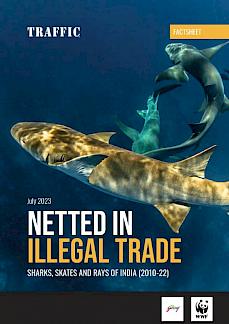
Bengali tiger, Madhav Shivpuri National Park, India © National Geographic Stock / Michael Nichols / WWF
i
bringing the tiger back from the brink
The Tiger Pathera tigris is possibly the world’s most iconic Big Cat, with recent estimates believing there to be approximately 3,800 left in the wild. Their territory can span several countries, meaning effective collaboration between Range States is crucial to their protection.
Once found across Asia, from Turkey to eastern Russia, over the past century tigers have disappeared from south-west and central Asia. Much of the remaining habitat is becoming increasingly fragmented as a consequence of human activity, made worse by poaching and random trapping. Today, tigers are found only in Bangladesh, Bhutan, Cambodia, China, India, Indonesia, Lao PDR, Malaysia, Myanmar, Nepal, Russia, Thailand and Viet Nam.
93% of tiger ranges
have been lost in recent years
758
tiger skins were found in seizures between 2000 and 2015
approximately 30%
of tiger products seized are suspected to originate from captive breeding
7,000–8,000
tigers are believed to be held in captive breeding facilities throughout Asia
3,900
individual tigers are estimated to remain in the wild
tiger conservation initiatives
TRAFFIC was a driving force behind the TX2 initiative, working to stop the illegal wildlife trade and reduce consumer demand. This resulted in the creation of Tiger Day, held annually on July 29th in order to promote awareness about the need to protect tigers through conservation initiatives.
Tigernet is a website launched in 2009 by the Indian government and contributed to by TRAFFIC. It collates information about tiger mortalities, poaching and the seizure of tiger parts in order to facilitate improvements in India’s anti-poaching efforts, including providing training and tools to enforcement agencies and park rangers to aid in the detection of illegal metal snares. TRAFFIC is also a founding member of the Malaysian Conservation Alliance for Tigers (MYCAT) which raises awareness and increases support for the conservation of tigers within Malaysia.
Although Tigers are listed in Appendix I of CITES, which bans all commercial international trade for for member countries, recent years have revealed an increase in tiger captive breeding to fuel demand for various tiger products.
Tiger skins and assorted objects at the US Fish and Wildlife Service repository © TRAFFIC
i
demand for tiger products
Although there are occasions where tigers are killed opportunistically or in retaliation for loss of livestock, the vast majority are poached to fuel demand for products consumed in Asian markets.
TRAFFIC has observed the illegal trade in tiger bone, skins, claws, teeth, blood and others, often for use in supposedly “medicinal” products.
To combat this demand TRAFFIC has been instrumental in the development and implementation of Social and Behavioural Change Communication (SBCC) initiatives to help reduce the motivations behind consumer consumptions of such products.
Seized tiger pelt with claws © Ola Jennersten / WWF-Sweden
i
reduced to skin and bones
Recent TRAFFIC analysis of the illegal Tiger trade mapped a minimum of 1,755 tigers seized from 2000–2015, averaging more than two animals recovered per week.
With at least 758 whole skins seized, they represent the most common commodity type in trade. Other items seized included bones and tiger bone wine, claws, canines, paws, gall bladders as well as dead and live tigers.
related reports to TIGERS
Explore the latest publications, reports and papers from TRAFFIC related to tiger conservation and the trade in tiger products.
Visit our resource library for the full TRAFFIC publication archive.

Wildlife Crime
Various projects combating wildlife crime in source and destination countries are working to protect tigers from poaching and illegal trade, both physical and online. Find out more about how we're working to keep tiger numbers up.

Behavioural change
Changing attitudes, knowledge and consumer behaviour is a crucial element in the fight to save tigers. We're currently implementing Social and Behavioural Change Communications initiatives in China and Viet Nam to address the consumption of tiger products.









